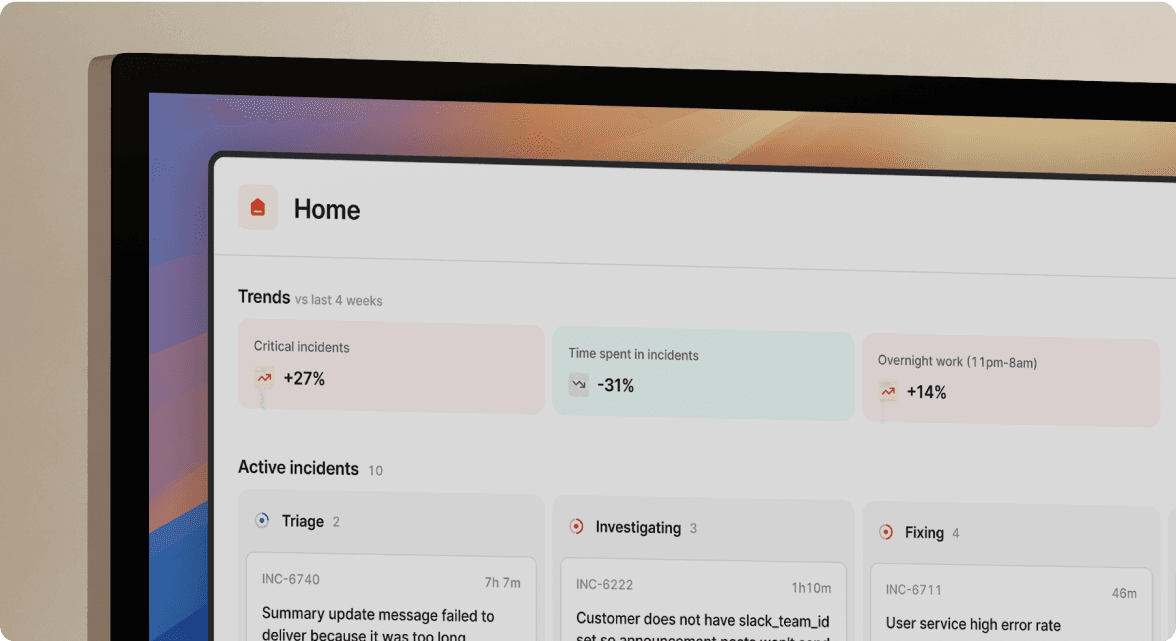incident.io vs FireHydrant
Learn how incident.io compares to FireHydrant
FireHydrant offers a dedicated incident management tool, but what are the benefits and drawbacks of using FireHydrant and how does it compare to incident.io? This page is designed to talk you through the pros and cons of each.
What’s the difference between incident.io and FireHydrant?
Like incident.io, FireHydrant offers end-to-end incident management. However, there are a few key differences between the two products.
Slack or Microsoft Teams native response vs dedicated UI
incident.io lives in Slack or Microsoft Teams, so you can run your incidents end-to-end where you already work following a simple and intuitive flow. This makes incident.io easy to adopt and accessible to use.
With FireHydrant, you can perform actions from Slack or Microsoft Teams, but the primary interface for running your incident is via the dedicated web UI. This means there are more steps required to configure FireHydrant.
Opinionated process vs deep configuration
At incident.io we’ve used our years of experience - running hundreds of incidents - to create a tool that supports your team when it matters most. We are unashamedly opinionated in how incidents should be run and provide you with the guardrails to do a great job (check out our Practical Guide to Incident Management to find out more). That doesn’t mean that we aren’t flexible, or that we can’t be customized. We have plenty of options available for adding custom fields and creating automated workflows that are relevant to your incident types. However, we do this in a simple, accessible way that you can set up and change yourself.
On the other hand, FireHydrant is highly customizable for each of your different services in a way that incident.io is not. If you require bespoke runbooks for each of your services, then FireHydrant may be the right tool for you.
Whole organization vs Site Reliability Engineer (SRE) focussed
FireHydrant is primarily targeted towards SREs, so if in your organization incidents are SRE-specific, and other teams don’t need to get involved much that may work well for you.
On the other hand, incident.io is designed to be accessible to your whole organization. This makes it easier for non-technical stakeholders — such as Customer Support, Compliance, and Leadership — to get involved in and have visibility of incidents going on across the organization.
Catalog is a great example of this, and a core component of the incident.io platform that embodies our approach to whole-organization incident response. Bring your teams and users from an IDP, connect your CRM to bring context on customers, and connect with existing tooling like issue trackers and code repositories to level up your incident response processes.
In comparison, FireHydrant's catalog serves technical use cases well but falls short when integrating non-technical systems like Salesforce. Its fixed structure, with rigid fields for environments, functionalities, services, and change events, limits flexibility and customisation. Despite offering strong team management support, the catalog struggles to adapt to diverse organisational needs.
So good, you’ll break things on purpose
Ready for modern incident management? Book a call with one of our experts today.

We’d love to talk to you about
- All-in-one incident management
- Our unmatched speed of deployment
- Why we’re loved by users and easily adopted
- How we work for the whole organization








